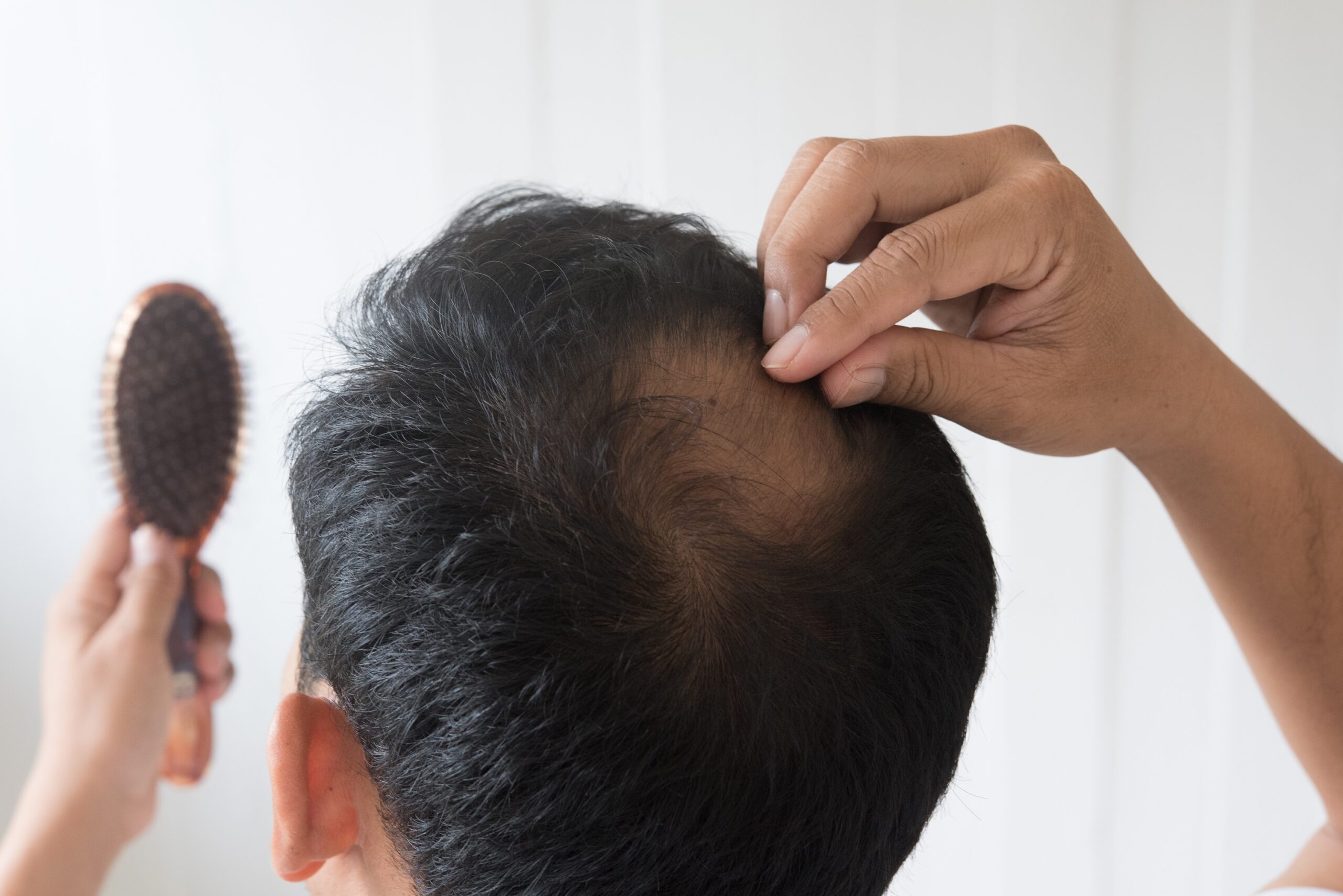Hair loss can be deep set thorn pricking on your self-confidence and self-esteem. for both men and women. Even though it affects both men and women, men are more vulnerable to it due to male pattern baldness. The common red signal blows when there is hair thinning and hair loss at the crown followed by an extensive hair loss. To know more about Hair Transplantation Click here
Androgenetic Alopecia refers to patterned hair loss in both men and women. The condition in men, also known as Male Pattern Baldness and hair loss begins in their early 20s and intensifies by the age of 35. The condition is quite common as it is seen in 40% of the world’s population and 55% of the Indian population could result in complete baldness if left untreated.

Androgenetic alopecia is caused as a result of an increase in the androgen(male hormone) levels in the body. It increases the sensitivity of hair follicles and makes them thin and shed faster than usual.
Male patterned hair loss can also be a result of heredity and high blood pressure.
Apart from various ailments, poor lifestyle management like poor diet, excessive smoking, obesity, etc could also result in hair loss along with the concerns of advancing age.

Androgenetic alopecia progresses in patterns and is quite discernible. Initially, it begins at the temples of the crown area followed by a recess in the hairline causing it to form an ‘M’ shape. The ‘M’ widens and the forehead appears to grow. You will experience extensive hair fall at this stage with a Bi-Temporal recession of hair from both the temples. This frequent hair fall results in the reduction of hair volume and thinner hair follicles. Hair subsequently thins in the crown area and leads to partial or complete baldness.
With the condition becoming common, a number of classifications came in to describe the same. Of them, the Hamilton-Norwood classification system for males is the most common.
Hamilton, an anatomist, proposed this detailed classification system based on frontoparietal, frontal recessions and frontal thinning of hair, consisting of eight evolutionary aspects and its three subgroups. The different categories of hair loss described by Hamilton include a) scalps, which are not bald (Types I-III) and b) scalps, which are bald (Types IV-VIII).
Here’s a brief breakdown of the stages with various subsets ranging from almost no visible thinning to the most advanced stage of having only a narrow band of hair along the bottom of the scalp.
Stage 1:
In this stage, little to no hairline recession is visible.
Stage 2:
A slight triangular recession on the front temporal lobes or a slight straight recession back from the hairline can be seen.
Stage 3:
A more noticeable triangular recession or as another subsect of this category, a more noticeable straight recession can be seen. This type shows the beginning stages of hair loss at the back of the head and not much recession along with other borderline cases.
Stage 4:
Some loss of hair on the back of the head with a more severe triangular recession or extremely thin hair in the front centre of the hair connecting to more full hair on the sides of the head.
Stage 5:
It includes extensive frontoparietal and frontal recessions with a sparseness or absence of hair on the crown.
Stage 6:
Receding hairline and loss on the vertex fully meets with hair loss on the side extending farther.
Stage 7:
Only a narrow band of hair along the bottom of the scalp remains.
Hamilton’s classification was a boon to clearly describe and understand the evolutionary stages of hair loss and to classify them. Norwood later added a few more rare patterns of hair loss to it to give the commonly used Hamilton-Norwood classification.
PRP Therapy
PRP or platelet-rich plasma therapy is a non-invasive method that obtains platelets from the patient’s blood and injects it into the patient’s scalp with activated plasma to stimulate the growth of hair follicles. A few session of the treatment safely promotes new hair growth can be seen in very less within a short time. To know more, click here.
Hair Transplant
Hair transplantation is a comparatively complex surgical procedure that involves incisions. It is the only treatment option for people with bald spots without any scope for hair regrowth. Visit Hair transplant to know more.
